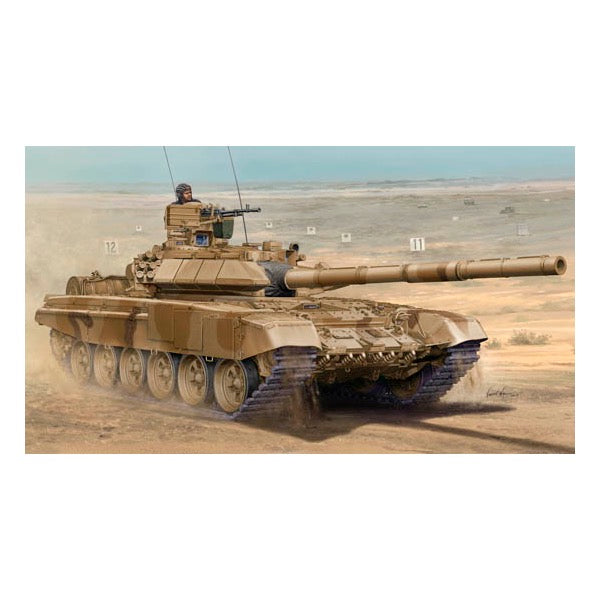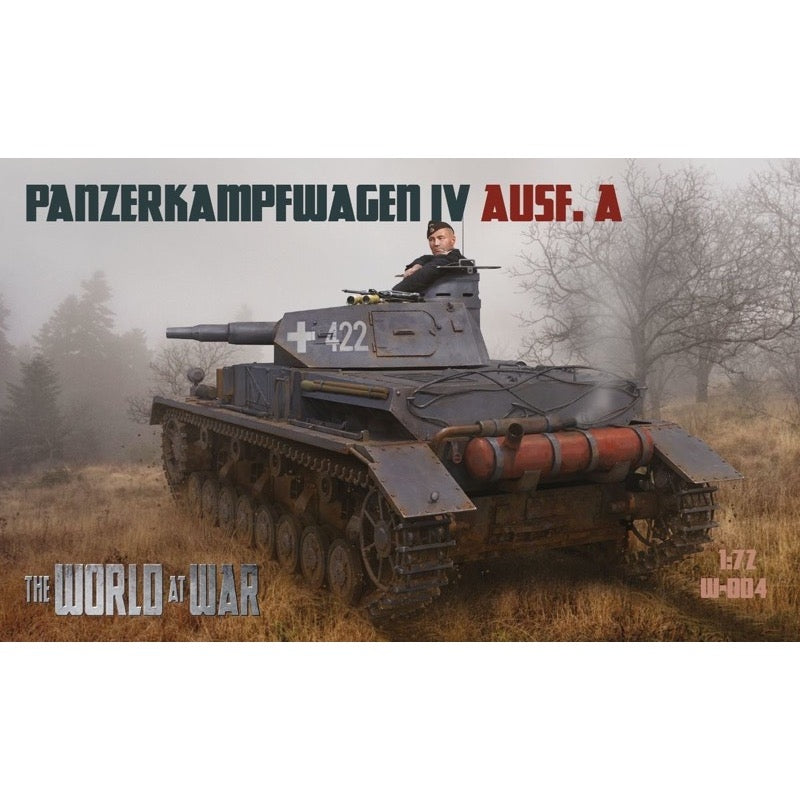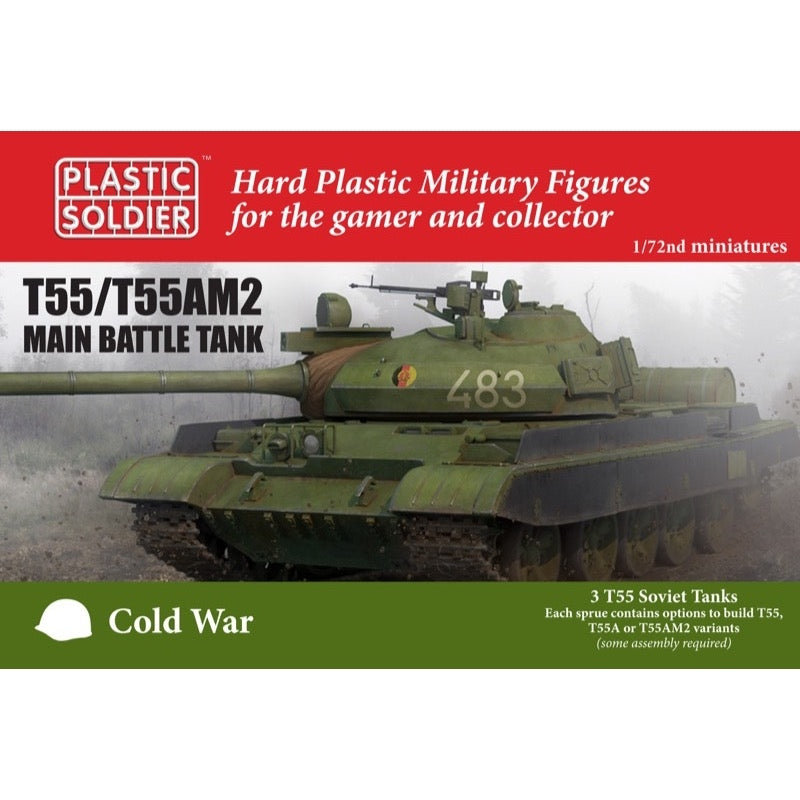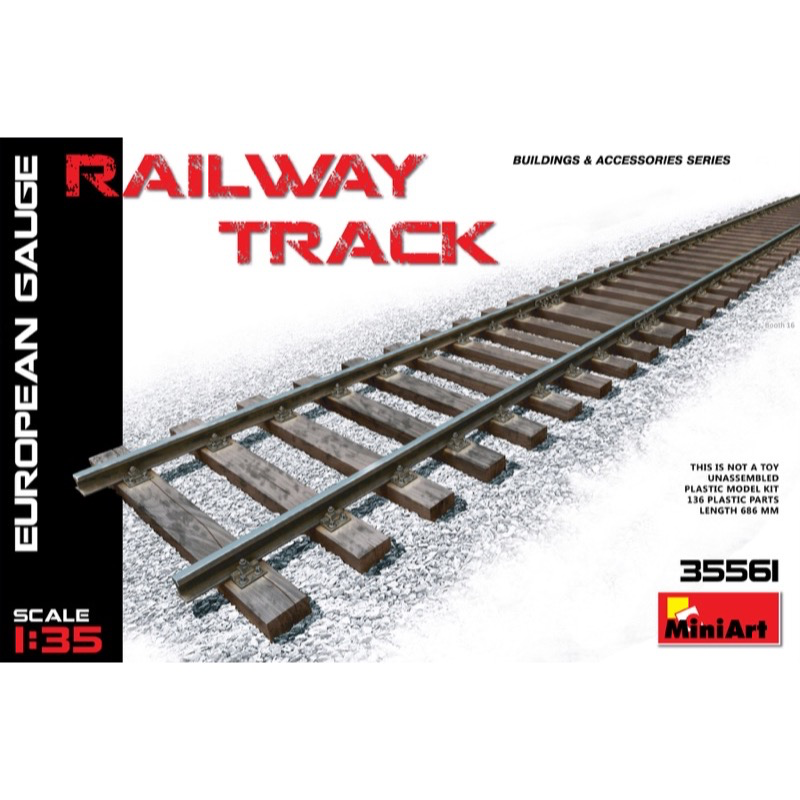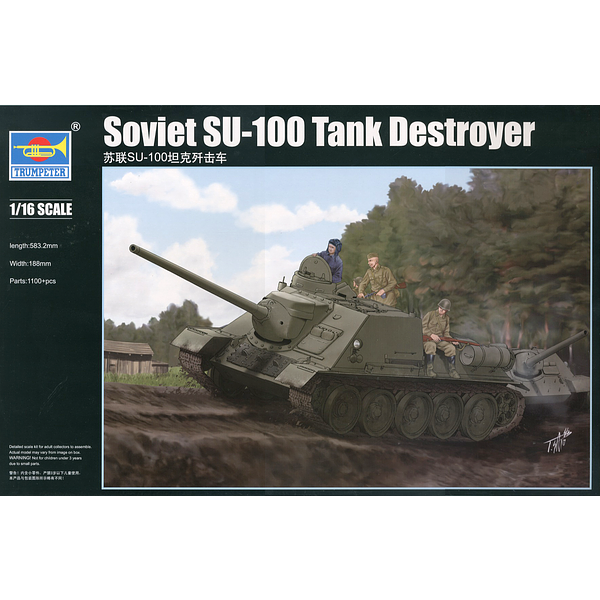
Trumpeter 00915 1/16 Soviet SU-100 Tank Destroyer
146.00
$
<p>It was developed in 1944 as an improvement to the SU-85, built on the same chassis as the T-34-85 tank. It was designed and built at the UZTM in Yekaterinburg. The SU-100 quickly proved itself to be among the best self-propelled anti-tank guns of World War II, able to penetrate 125 mm of vertical armor from a range of 2,000 m and the sloped 85 mm front armor of the German Panther from 1,500 m . After intensive testing with different models of 100 mm gun Soviet engineers approved the D-10S gun for mass production. The hull of SU-100 had major improvements over the SU-85; the thickness of the front armour was increased from 45 to 75 mm , and the commander's workplace was made in a small sponson on the right side of the hull; combined with the commander's cupola this greatly improved the commander's effectiveness. For better ventilation two ventilator units were installed, instead of only one as in the SU-85. Mass production began in September 1944.</p>
<h3>Features</h3>
<ul>
<li>Stunning detail inside and out!</li>
<li>Markings for 3 variations. Includes photo-etched metal parts.</li>
<li>Kit consists of over 1100 parts</li>
<li>Refined detail</li>
<li>Multi-slide moulded lower hull</li>
<li>Full interior details</li>
<li>Individual tracks links</li>
<li>Photo-eteched parts included</li>
</ul>
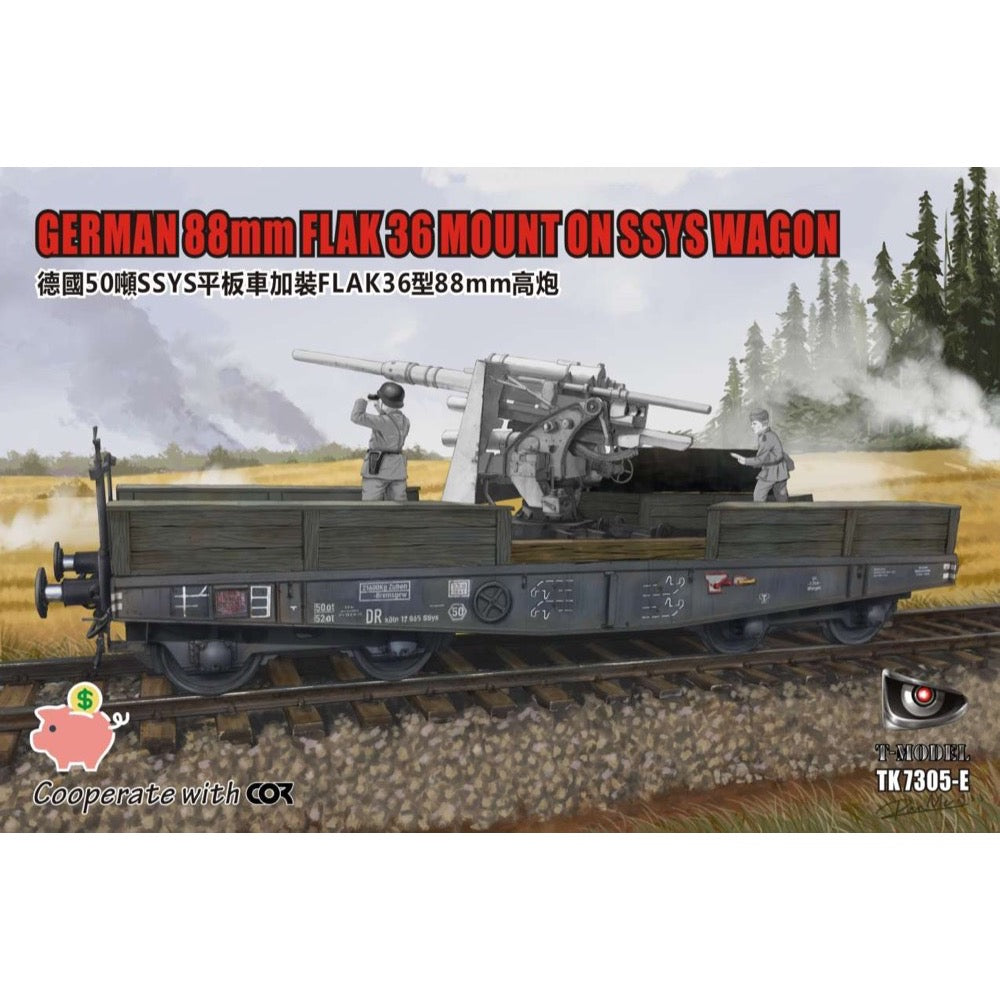
T-Model TK7305E 1/72 German 88mm Flak 36 Mounted On SSYS Wagon with photo etch
13.00
$
<h3>T-Model 1/35 German 88mm Flak 36 Mounted On SSYS Wagon</h3>
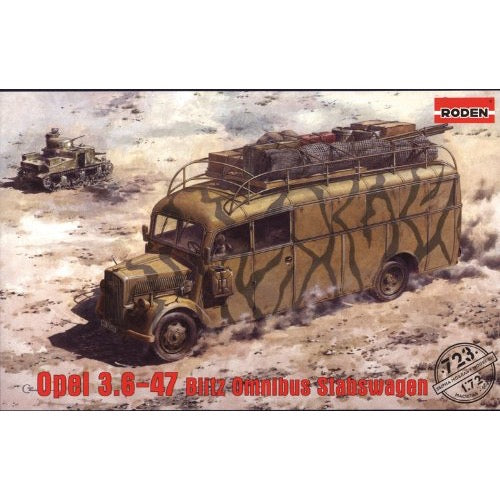
Roden 723 1/72 Opel Omnibus Stabswagen
8.00
$
<p>The Roden German Opel Blitz Mobile Command Vehicle Model Kit in 1/72 scale from the plastic military model range accurately recreates the real life German military support vehicle used during World War II. </p>

Takom 2077 1/35 French AML-90 Light Armoured Car Two in One
22.00
$
<p>The Panhard AML Light Armoured Car is a fast, long-ranged, and relatively cheap first-generation armoured car with excellent reconnaissance capability. Designed on a small, lightly armoured 4X4 chassis, it weighs an estimated 5.5 tonnes</p>

Roden 716 1/72 BL 8in Howitzer Mk.VI
10.00
$
<p>The First World War is remembered as a new type of war, in which such technological developments as the tank and the aircraft were used for the first time, but also completely dependent on conventional weapons such as, for example, the rifle or the gun. There were no radical changes in the technology of these types of weapons during the four years of the Great War, but they were constantly improved and had already moved far away from comparable types of weapons used in the 19th Century and earlier.
In 1915, the British corporation Vickers created a new 8-inch caliber gun, which received the military index Mk.VI. This was a significant constructive modernization of the previous development of Mk.V, the improvements touched first of all the hydraulic mechanism of the rollback of the gun barrel. In combat, the shelling sector was 4 degrees to the left or to the right, or to 50 degrees up. </p>
<p>The state-owned part of the gun has acquired a new, more modern look. The combat range of the shot reached almost 10 kilometers, but the weight of the gun compared with the previous version increased by more than three tons. In order to transport the gun to combat positions, it clashed with a cumbersome fore part. Which clings to the heavy haulers of that time, such as the FWD truck or the Holt 75 tractor. </p>
<p>Besides the Vickers plants, artillery production was also initiated at the facilities of the Armstrong company, and licensed by the US plants of the Midvale Steel and Ordnance Co., at Nicetown, Pennsylvania. This type of gun was not only widely used on the First World War battlefields of the Western Front, but also in Macedonia and in Palestine. In addition to service in the British Army, it was employed by the artillery divisions of the Dominions of the Empire - Australia and Canada. Furthermore, within the framework of the co-operation agreements of the Entente, a small number of Mark VIs found their way to Imperial Russia. </p>
<p>Most surprising was the story of the Mark VIs built in the USA. After the end of the First World War, they, like most of the rest of the armament of the American Army, returned home, where they were mothballed. However, in 1939, after the Soviet aggression against Finland and the Finnish appeal to the Western powers to provide military assistance, 32 Mark VI howitzers, along with other types of weapons, were sent to the country. They remained in service even after the end of the Second World War, and only in the late 1960s were withdrawn from the ranks of the army as obsolete, and individual examples were given to museums, which they are exhibited today. </p>
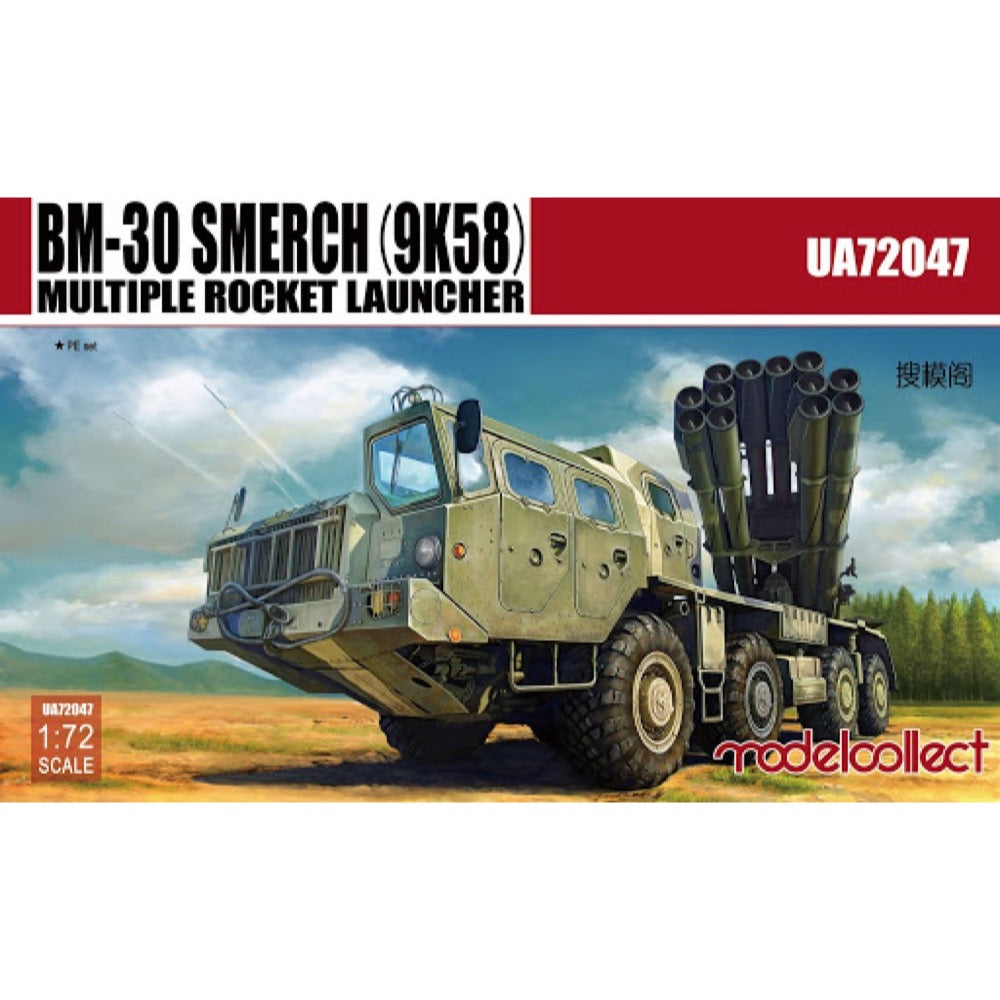
Modelcollect UA72047 1/72 BM-30 Smerch Rocket Launcher
15.00
$
<p><strong>The kit includes:</strong><br></p>
<ul>
<li>125 plastic parts</li>
<li>decal (sticker)</li>
<li>photoetched</li>
<li>8 rubber tires</li>
<li>1 frame is made of transparent plastic</li>
<li>scheme for the staining patterns</li>
<li>detailed instruction in English</li>
</ul>
<p>(Glue and paint are not included)</p>
<br>



